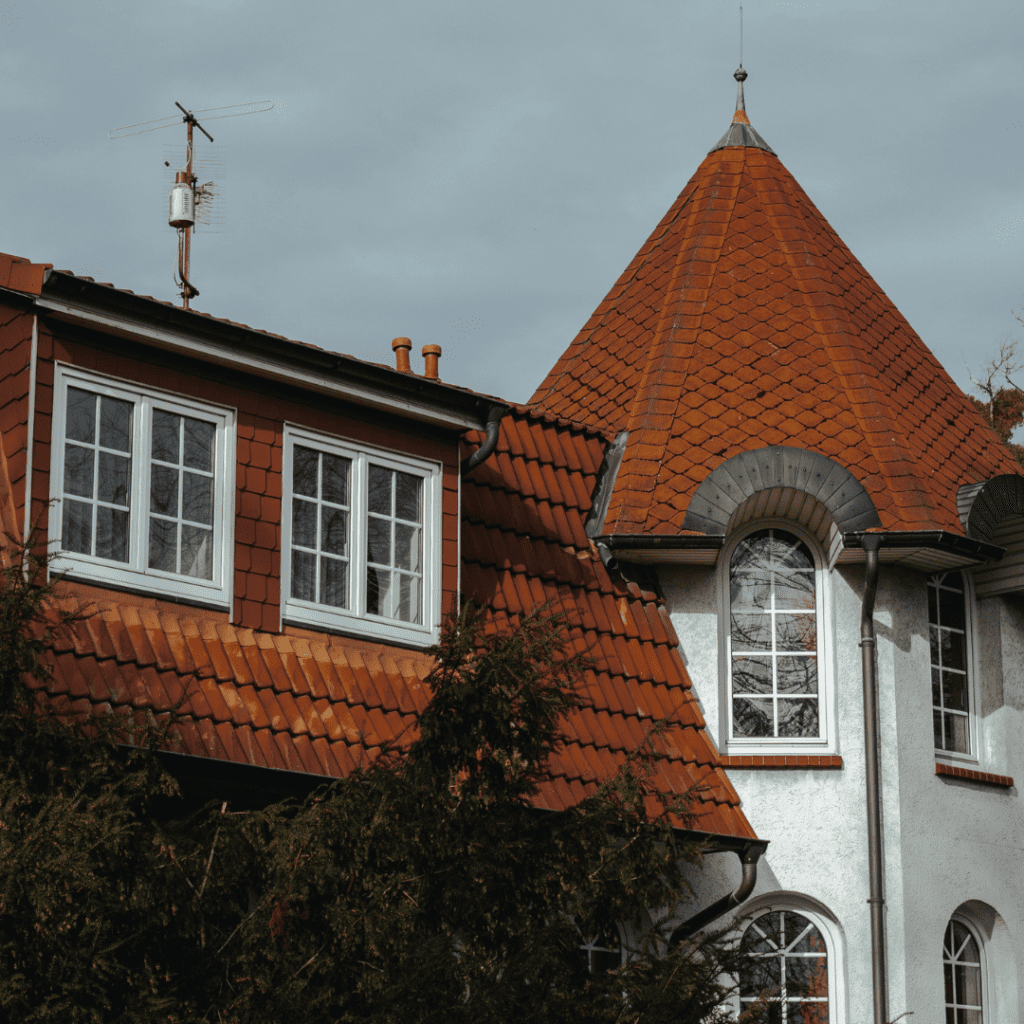One of the most important aspects of home and building maintenance is knowing what your roofing material is made of. Being well informed of the different longevity, materials, and prices of shingles could make a huge financial difference down the line when it comes time for repair or redesign of your residence.
Armour Shield Roofing strongly discourages homeowners from going up and down ladders or doing repairs on their roofs. The accidents and fatalities sustained by untrained individuals are tragic and avoidable by calling a professional roofing contractor.
In this article, we’ll explore some of the most popular types of roofing shingles and a few of the benefits and drawbacks found in each.
Asphalt Shingles are the most popular roof replacement in North America
The most common type of roof found covering North American houses is known as the ‘30-year Asphalt shingle’. As the name suggests, these classic shingles are known for their durable make-up of fibreglass mesh, asphalt, and reflective granules.
Suburbia has typically favoured asphalt for its ability to look good on almost any style of home at an affordable price, while also providing great protection.
Unlike other roofing shingles, the simple style of 3-tab asphalt doesn’t force you to sacrifice style in exchange for cost-effectiveness. Asphalt shingles offer versatile style options and reliable quality for those looking for a functional roof on a budget.
Steel roofing has a unique aesthetic
Not to be confused with the roof of your average yard shed, metal roofing shingles have come back into popularity due to their sturdy nature, eco-friendliness, overall functionality, and unique aesthetic.
The main attraction to metal is the opposite of what cheaper shingles offer: longevity. StateFarm and HomeStar suggest that metal shingles could last up to 60-70 years, potentially doubling the longevity of asphalt. Metal also has several natural benefits as a roofing material, including:
- – naturally sturdy and resistant material
- – fire and stormproof
- – able to divert snow/ice better than non-metal roofs
- – able to prevent heat absorption and improve cooling costs for your home with its naturally reflective surface
There are many stylish options for the aesthetic of a steel roof, for those concerned about buying an inelegant-looking ‘shed roof’. These include metal shingles that like steel, tin, aluminum, and even the lucrative copper option. Their stylish benefits, however, is part of what makes metal roofing a more expensive option both in up-front costs and maintenance compared to cheaper materials like asphalt.

Slate, a roofing material from centuries ago, is still used today
Perhaps a material you wouldn’t expect, slate has benefits that rival even the steel roof. In terms of its structural make-up, slate is similar to a neatly segmented stack of cards, strengthened or weakened by the number of layers the tile has.
The result is a smooth, reflective surface that aids in the important function of diverting snow and rainwater from your roof. It also boasts impressive longevity, with HomeAdvisor estimating its lifespan to be in the centuries.
There are, however, additional issues to examine when considering slate shingles, above and beyond those of other materials. In addition to the cost of installation, slate roofing shingles also come with these added expense considerations:
- – finding expert roofers that are able to safely install the material
Any amateurs or hobbyists should avoid doing the construction work required on a slate roof. The material’s slippery surface makes installation hazardous, which means that when considering the cost of a slate roof, consumers should include the cost of hiring an expert.
Besides the physical risk to the installer, insight from a professional about balancing the weight of slate shingles, or even making sure that your roof will be able to support the weight of the stone in the first place can be an important safety step in the installation process.
- – finding repair solutions for damage or wear taken by the stone
Repair also poses a problem: slate shingle damage is more difficult to patch, given the fragmentary nature of the stone and the difficulty involved in finding well-fitted replacement pieces. Slate also requires an expert hand to make these maintenance pieces look like a seamless part of your roof, and in many cases to find a reliable source of stone in the first place.
Overall, slate is a great-looking choice of roof, as well as one of the most durable. It’s well worth the cost if you can find a place in your budget for it, and are willing to find professionals who know what they’re doing with installation.
Clay originated as a roofing material in Europe
If you prefer a style of roof that has stood the test of time and has obvious style as well as longevity, then it’s worth looking into clay.
Clay tiled roofs provide a rustic European look that you may recognize as characteristic of Mediterranean homes. Along with historical durability, the properties of clay provide:
- – ‘class A fire resistance’ which boasts higher protection than that of cheaper roofing shingles
- – resilience against the elements
- – an easier maintenance and repair process
The downsides of clay are very similar to other shingles made of some form of stone/earthy material: weight and cost. These factors often mean that clay tiles can cost double that of standard asphalt, and need special installation to ensure that your roof can handle the weight. Another possible downside is that while maintenance is easier, clay tiles may not fare so well in colder climates such as Canada, where the seasonal changes in temperature may result in cracked tiles.

In Conclusion
Hopefully from examining this list you have a new understanding of what is important to you when looking into roofing shingles, including considerations of style, cost, longevity, and durability.
Each material comes with its own pros and cons. Consumers should carefully consider their own situation and budget in order to make well-informed decisions and good investments in the future of their homes and buildings.
Armour Shield Roofing strongly discourages homeowners from going up and down ladders or doing repairs on their roofs. The accidents and fatalities sustained by untrained individuals are tragic and avoidable by calling a professional roofing contractor.

